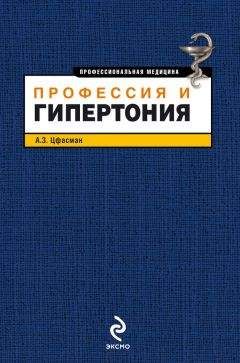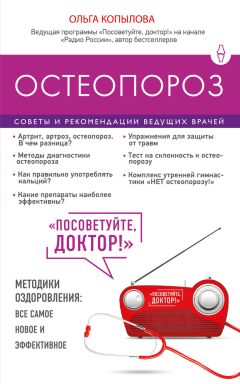Lo S.H., Lin L.Y., Hwang J.S. et al. Working the night shift causes increased vascular stress and delayed recovery in young women. // Chronobiol Int. – 2010. – vol. 27(7). – pp. 1454–1468.
Lockley S. W., Skene D.J., Arent J. et al. Relationship between melatonin rhythms and visual loss in the blind. // J Clin Endocrinol Metab. – 1997. – vol. 82 – pp. 3763–3770.
Lowden A., Akerstedt Т., Wibom R. Suppression of sleepiness and melatonin by bright light exposure during breaks in night work. // J Sleep Res. – 2004. – vol. 13. – pp. 37–43.
Lozano-Lazaro M.G., Antequera-Noves R., Conejo-de la Cruz M.R. et al. Continuous care, one more cardiovascular risk factor to consider? // Enferm Clin. – 2010. – vol. 20(5). – pp. 292–296.
Lusardi P., Piazza E., Fogari R. Cardiovascular effects of melatonin in hypertensive patients well controlled by nifedipine: a 24-hour study. // Br J Clin Pharmacol. – 2000. – vol. 49. – pp. 423–427.
Mansoor GA. Sleep actigraphy in hypertensive patients with the “non-dipper” blood pressure profile. //J Hum Hypertens. – 2002. – vol. 16. – pp. 237–242.
Manuck S.B. Cardiovascular reactivity in cardiovascular disease // Int Behav Med. – 1999. – vol. 1. – pp. 4-31.
Meyer J.D. Occupational Health and the Heart. – 2003.
Micciolo R. Non-occupational lead exposure and hypertension in northern Italy. // Int J Epidemiol. – 1994. – vol. 23. – pp. 312–320.
Morrell M.J., Finn L., Kim H. et al. Sleep Fragmentation, Awake Blood Pressure, and Sleep – Disordered Breathing in a Population-based Study // Am J Respir Crit Care Med. – 2000. – vol. 162(6). – pp. 2091–2096.
Muller J.E., Stoone PH., Turi Z.G. et al. Circadian variation in the frequency of onset of acute myocardial infarction. // New England J Med. – 1985. – vol. 313(21).-pp. 1315–1322.
Munakata М., Abe K., Sasaki S. et al. Assessment of agedependent changes in circadian blood pressure rhythm in patients with essential hypertension. // J Hypertens. – 1991. – vol. 9(5). – pp. 790–798.
Netterstrem B., Kristensen T.S., Sjoi A. Psychological job demands increase the risk of ichaemic heart disease: a 14-year cohort study of employed Danish men. // Eur J Cardiovasc Prev Rehabil. – 2006. – vol. 13(3). – pp. 414–420.
Nomiyama K., Nomiyama H., Liu S. et al. Lead induced increase of blood pressure in female lead workers. // Occup Environ Med. – 2002. – vol. 59(11). – pp. 734–738.
O’Brien E., Murphy J., Tyndall A. et al. Twenty-four-hour ambulatory blood pressure in men and women aged 17 to 80 years: the Allied Irish Bank Study. // J Hypertens. – 1991. – vol. 9(4). – pp. 355–360.
O’Brien E., Sheridan J., O’Malley K. Dippers and non-dippers. // Lancet. – 1988. – vol. 2. – pp. 397.
O’Connor D.B., O’Connor R.C., White B.L. et al. Job strain and ambulatory blood pressure in British general practitioners: a preliminary study// Psychology, Health and Medicine. – 2000. – vol. 5(3).
Ohira Т., Tanigawa Т., Iso H. et al. Effects of shift work on 24-hour ambulatory blood pressure and its variability among Japanese workers. // Scand J Work Environ Health. – 2000. – vol. 26(5). – pp. 421–426.
Ohkubo Т., Hozawa A., Yamaguchi J. et al. Prognostic significance of the nocturnal decline in blood pressure in subjects with and without high 24-hour blood pressure: the Ohasama study. //J Hypertens. – 2002. – vol. 20 – pp. 2183–2189.
Ostry A.S., Kelly S., Demers PA. et al. A comparison between the effort-reward imbalance and demand control models // BMC Public Health. – 2003. – vol. 27. – pp. 3-10.
Otsuka К., Watanabe H., Comelissen G. et al. Gender, age and circadian blood pressure variation in apparently healthy rural vs metropolitan Japanese. // Chronobiologia. – 1990. – vol. 17(4). – pp. 253–265.
Paffenbarger R.S., WingA.L., Hyde R.T. et al. Physical activity and incidence of hypertension in college alumni. // Am J Epidemiol. – 1983. – vol. 117. – pp. 245–257.
Palatini P., Penzo М., Racioppa A. et al. Clinical Relevance of Nighttime Blood Pressure and of Daytime Blood Pressure Variability. // Arch. Int.Med. – 1992. – vol. 152(9).
Panda S., Nayak S.K., Campo B. et al. Illumination of the melanopsin signaling pathway. // Science. – 2005. – vol. 307 – pp. 600–604.
Parati G. Blood pressure reduction at night: sleep and beyond.// J Hypertens. – 2000. – vol. 18(12). – pp. 1725–1729.
Paulis L. Simko F. Blood Pressure Modulation and Cardiovascular Protection by Melatonin: Potential Mechanisms Behind. // Physiol Res. – 2007. – vol. 56. – pp. 671–684.
Pieters G.F., de Leeuw P. W., ArendJ.D. et al. Circulating adrenaline is not involved in the circadian blood pressure profile. //J Hypertens. – 1995. – vol. 13(12). – pp. 778–782.
Piko B. Epidemiology of cardiovascular disease (CVD). – 2005.
Pickering T.G. Psychosocial stress and blood pressure, in Hypertension Primer. – AHA. – 2000.
Pickering T.G. Mental stress as a casual factor in the development of hypertension and cardiovascular disease. // Current Hypertension Reports. – 2001. – vol. 3. – p. 249–254.
Portaluppi F., Cortelli P., Provini F. et al. Alterations of sleep and circadian blood pressure profile. // Blood Press Monit. – 1997. – vol. 2(6). – pp. 301–313.
Radi S., Lang Т., Lauwers-Cances V. et al. Job constraints and arterial hypertension: different effects in men and women: the IHPAF II case control study. // JOEM – 2005. – vol. 62. – pp. 711–717.
Rauchenzauner М., Ernst F., Hintringer F. et al. Arrhythmias and increased neuroendocrine stress response during physicians’ night shifts: a randomized crossover trial. // Eur Heart J. – 2009.
Rhodes W., Heslegrave R., Ujimoto K.V. et al. Impact of shift work and overtime on air traffic controllers – Phase II: Analysis of shift schedule effects on sleep, performance, physiology and social issues. // Final report TP12816E, Transportation Development Centre. Transport Canada. – 1996.
Reiter R.J., Tan D.-X., Korkmaz A. The circadian melatonin rhythm and its modulation: possible impact on hypertension. // J Hypertens. – 2009. – vol. 27 – pp. S17-S20.
Rio M.C. Strategy for the Implementation of a New Categorization System in Spain. // Guidelines for medical drugs (working group session). 16th International Conference on Alcohol, Drugs and Traffic Safety – Montreal: 2002 (ICADTS, T2002). – pp. 547–552.
Roach G.D., Reid K.J., Ferguson S. et al. The relationship between the rate of melatonin excretion and sleep consolidation for locomotive engineers in natural sleep settings. //J Circadian Rhythms. – 2006. – vol. 4. – p. 8.
Rosa R.R., Bonnet M.H., Bootzin R.R. et al. Intervention factors for promoting adjustment to nightwork and shiftwork. // Occup Med. – 1995. – vol. 5. – pp. 391–414.
Routledge F., McFetridge-Durdle J. Nondipping blood pressure patterns among individuals with essential hypertension: a review of the literature. // Eur J Cardiovasc Nurs. – 2007. – vol. 6(1). – pp. 9-26.
Riiger М., Gordijn М., Beersma D. et al. Weak relationships between suppression of melatonin and suppression of sleepiness/fatigue in response to light exposure. //J Sleep Res. – 2005. – vol. 14. – pp. 221–227.
Sandberg S., Kohvakka A., Cor din A. Rapid reversal of circadian blood pressure rhythm in shift workers. // J Hypertens. – 1988. – vol. 6(5). – pp. 425–429.
ScheerFA., Van Montfrans, Van Someren E.J. et al. Daily nighttime melatonin reduces blood pressure in male patients with essential hypertension. // Hypertens. – 2004. – vol. 43. – pp. 192–197.
Schnall P.L., Schwartz J.E., Landsbergis P.A. et al. Relation between job strain, alcohol, and ambulatory blood pressure // Hypertens. – 1992. – vol. 19(5). – pp. 488–494.
Schwartz G.L. Lead, blood pressure, and cardiovascular disease in men. // Arch Environ Health. – 1995. – vol. 50. – pp. 31–37.
Sekaran S., Lupi D., Jones S.L. et al. Melanopsin-dependent photoreception provides earliest light detection in the mammalian retina. // Curr Biol. – 2005. – vol. 15.-pp. 1099–1107.
Sharifian A., Farahani S., Pasalar P. et al. Shift work as an oxidative stressor. // J Circadian Rhythms. – 2005. – vol. 3. – p. 15.
Sherry P. Managing Fatigue in the Railroad Industry. // National Center for Intermodal Transportation University of Denver. – 2007.
Sicard B.A., Trocherie S., Moreau J., et al. Evaluation of zolpidem on alertness and psychomotor abilities among aviation ground personnel and pilots // Aviation, Space and Environmental Medicine. – 1993. – pp. 371–375.
Sjolin-Israelsson В.A., Enstrom I.E. The impact of work on the night blood pressure dipping profile. // Blood Press. – 2007. – vol. 16(1). – pp. 45–49.
Spenser C., Lip D. Hypertension. Epidemiology and risks. // Pharm J. – 1996. – vol. 263(7059). – pp. 280–283.
Staessen J.A., Bulpitt C.J., O'Brien E. et al. The diurnal blood pressure profile. A population study. // Am J Hypertens. – 1992. – vol. 5(6 pt 1). – pp. 386-92.
Staessen J.A., O’Brien E.T. Development of diagnostic thresholds for automated measurements of blood pressures in adults. // Blood Pressure Monitoring. – 1999. – vol. 4. – pp. 127–136.
Staessen J.A., ThijsL., Fagard R. et al. Predicting cardiovascular risk using conventional vs ambulatory blood pressure in older patients with systolic hypertension. Systolic Hypertension in Europe Trial Investigators. // TAMA. – 1999. – vol. 282(6) – pp. 539–546.
Stamier J., Caggiula A.W., Grandits G.A. Chapter 12. Relation of body mass and alcohol, nutrient, fiber, and caffeine intakes to blood pressure in the special intervention and usual care groups in: Multiple Risk Factor Intervention Trial. // Am J Clin Nutr. – 1997. – vol. 65. – pp. 338S-365S.
Steptoe A., Roy M.P., Evans O. Psychosocial influence on ambulatory blood pressure over working and non-working days. //J Psychophys. – 1996. – vol. 10. – pp. 218–227.
Steptoe A., Cropley M.,Joekes K. Job strain, blood pressure and response to uncontrollable stress. //J Hypertens. – 1999. – vol. 17. – pp. 193–200.
Steptoe A., Willemsen G. The influence of low job control on ambulatory blood pressure and perceived stress over the working day in men and women from the Whitehall
II cohort //J Hypertens. – 2004. – vol. 22(5). – pp. 915–920.
Sternberg H., Rosenthal Т., Shamiss A. et al. Altered circadian rhythm of blood pressure in shift workers. //J Hum Hypertens. – 1995. – vol. 9(5). – P. 349–353.
Stolarz К., Staessen J.A., O’Brien E.T. //Night-time blood pressure: dipping into the future? //J Hypertens. – 2002. – vol. 20(11). – pp. 2131–2133.
Stork J., Schrader J., Labrot B. et al. Arbeitsassoziierter Blutdruckanstieg und Hypertoniepravalenz – eine Querschnittuntersuchung // Zbl Arbeitsmed 42. – 1992. – vol. 11. – pp. 468–472.
Streddo C., Fuchs S.C., Merlo A.R. et al. Shift work is not associated with high blood pressure or prevalence of hypertension. // PLoS One. – 2010. – vol. 5(12). – p. el5250.
Su T.E., Lin L.Y., Baker D. et al. Elevated blood pressure, decreased heart rate variability and incomplete blood pressure recovery after a 12-hour night shift work. //J Occup Health. – 2008. – vol. 50(5). – pp. 380–386.
Suwazono Y., Dochi М., Sakata K. et al. Shift work is a risk factor for increased blood pressure in Japanese men. // Hypertens. – 2008. – vol. 52. – p. 581.
Takeda N., Maemura K. Circadian clock and cardiovascular disease. // Journal of Cardiology. – 2011. – vol. 57. – pp. 249–256.
Tuck M.L., Stern N., Sowers J.R. Enhanced 24-hour norepinephrine and rennin secretion in young patients with essential hypertension: relation with the circadian pattern of arterial blood pressure. // Am J Cardiol. – 1985. – vol. 1. – pp. 112–115.
U.S. Environmental Protection Agency. Air quality criteria for lead: supplement to the 1986 addendum. Research Triangle Park, NC: U.S. Environmental Protection Agency, Office of Health and Environmental Assessment, Environmental Criteria and Assessment Office. EPA 600/8—89—049E. – 1990.
Van Dongen H.P., Maislin G., Kerkhof G.A. Repeated assessment of the endogenous 24-hour profile of blood pressure under constant routine. // Chronobiol Int. —
2001. – vol. 18(1). – pp. 85–98.
Van Egeren L.F. The relationship between job strain and blood pressure at work, at home, and during sleep. // Psychosom Med. – 1992. – vol. 54. – pp. 337–343.
Vaughan G.M., Becker R.A., Allen J.P. Elevated blood pressure after pinealectomy in the rat // Endocrinol Invest. – 1979. – vol. 2 – pp. 221–224.
Verstraete A.G. Which medicinal drugs impair driving performance? An overview of the European experience, in H. Laurell and F. Schlyter (Els.); Alcohol; Drugs and Traffic Safety. – Stockholm. – 2002. – vol. 4 – pp. 1222–1227.
Villani A., Parati G., Groppelli A. et al. Noninvasive automatic blood pressure monitoring does not attenuate nighttime hypotension. Evidence from 24-h intra-arterial blood pressure monitoring. // Am J Hypertens. – 1992.
Viswanathan A.N., Schemhammer E.S. Circulating melatonin and the risk of breast and endometrial cancer in women. // Cancer Lett. – 2009. – vol. 281(1). – pp. 1–7.
Weber G. High Blood Pressure. Job Related Stress Increases. Blood Pressure While Sleeping. // About.com Guide. – 2007.
Whelton P.K., Applegate W.B. et al. Efficiency of weight loss and reduced sodium intake in the Trial of Nonpharmacologic Interventions in the Elderly. // Circulation. – 1996. – vol. 94 (suppl 1). – pp. 1-178.
Yamasaki F., Schwartz J.E., Gerber L.M. et al. Impact of shift work and race/ethnicity on the diurnal rhythm of blood pressure and catecholamines. // Hypertens. —




